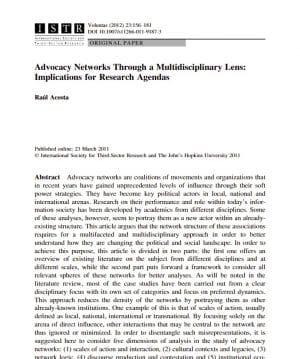
Policy highlights:
- Advocacy networks are coalitions of movements and organizations that in recent years have gained unprecedented levels of influence through their soft power strategies. How to perceive these networks is often limited, for example the scale of action of these words are only distinguished among the local, national or international level. This might ignore or minimize other interactions which are central to this network.
- Therefore, five dimensions of analysis should be included in the study of advocacy:
- Scales of (inter)action: interactions imply an immense resource pool that can allow for ongoing improvements and adaptations to new environments.
- Cultural contexts and legacies: advocacy efforts are always situated in cultural contexts and legacies, which are relevant to understand the logic behind local policy-making and political practices.
- Network logic: the operational structure of advocacy networks is key to understanding their influence, development and potential in order to get insight into their evolution.
- Discourse production and contestation: advocacy networks operate with a strategic use of information and issue visualization in order to challenge official discourses.
- Institutional ecosystem: the ecosystem of advocacy networks would include government agencies, offices, international organizations as well as private co-operations. Examining the ecosystem provides insight in the manoeuvres taking place in different levels at the same time.
- The article stresses that when working with advocacy networks, examining these 5 dimensions is necessary in order to gain a comprehensive understanding of how the webs of civil society groups are transforming the political landscape.








